Table of contents
Definition
A delta is a landform that forms from the deposition of sediment carried by a river as the flow exits its mouth and enters slower-moving or standing water.
- This deposition occurs where the velocity of the river decreases significantly upon meeting a body of water such as a lake, sea, or ocean, causing the river to drop sediments that create the delta.

How are Deltas Formed?
The formation of deltas occurs at the mouth of rivers, where they meet an ocean, sea, or lake. This process involves a combination of hydraulic actions, sediment transport, and depositional mechanisms that build up deltaic landforms over time.

Here’s a more detailed look at how deltas are formed:
Transport of Sediment
- Source: Rivers originate from higher elevations and collect sediments from eroded rocks, soil, and other materials as they flow towards lower elevations.
- Carrying Capacity: As rivers travel across the landscape, they have the capacity to carry both dissolved substances and physical particles. The amount and size of sediment a river can transport are directly related to its velocity and volume.
Reduction in Flow Velocity
- Meeting Larger Water Bodies: As the river approaches a larger body of water, such as an ocean or a lake, its flow velocity decreases significantly. This is primarily due to the broader area over which the river’s waters must spread and the encounter with a larger, more static water body.
- Loss of Energy: With the loss of flow velocity, the river loses its energy to carry sediments, especially heavier particles, which begin to settle out of the water column.
Flocculation
- Chemical Processes: When fresh river water loaded with sediments meets the saline water of an ocean or sea, chemical processes such as flocculation occur. This involves the clumping together of fine particles like clay and silt due to the electrical charge differences between the freshwater sediments and saline water.
- Increased Settling: These clumps become heavier and settle more quickly than individual particles, accelerating the deposition process at the river mouth.
Deposition and Delta Growth
- Layering of Sediments: The sediments deposited at the mouth of the river begin to accumulate, forming layers. Over time, these layers build up to create new landforms.
- Formation of Distributaries: As the delta grows, the river may split into several smaller channels known as distributaries. This branching network helps distribute water and sediments across the delta, promoting further growth.
- Deltaic Features: The deposited sediments gradually form various features like levees, which are raised banks alongside river channels, and backswamps, areas of standing water behind levees.
Influence of Tides and Currents
- Shaping of the Delta: The final shape and size of a delta are also influenced by tidal movements and ocean currents. These factors can redistribute the deposited sediments, further shaping the deltaic landforms.
- Types of Deltas: Depending on the dominant forces (river, wave, or tide), different types of deltas can form, such as bird’s foot (dominated by river deposition), arcuate (shaped by strong waves), and estuarine (formed in a tidal estuary).

Types of Deltas
Deltas can vary greatly in shapes and structures, depending on the river flow, sediment load, tide levels, and wave actions.
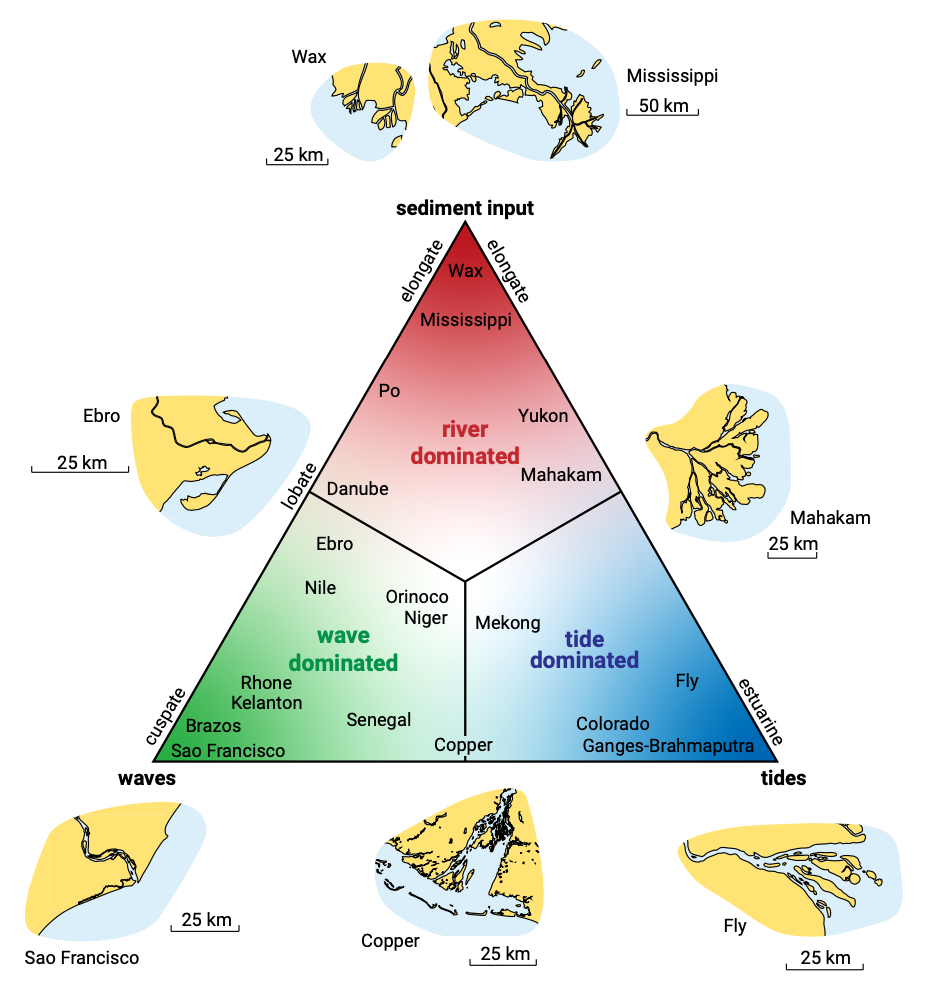
There are several types of deltas:
Arcuate Delta
- Also known as a fan-shaped delta.
- Characterized by a smooth, semi-circular, outward bulge.
- Examples
- Nile Delta in Egypt.
- Ganges-Brahmaputra Delta in Bangladesh and India.
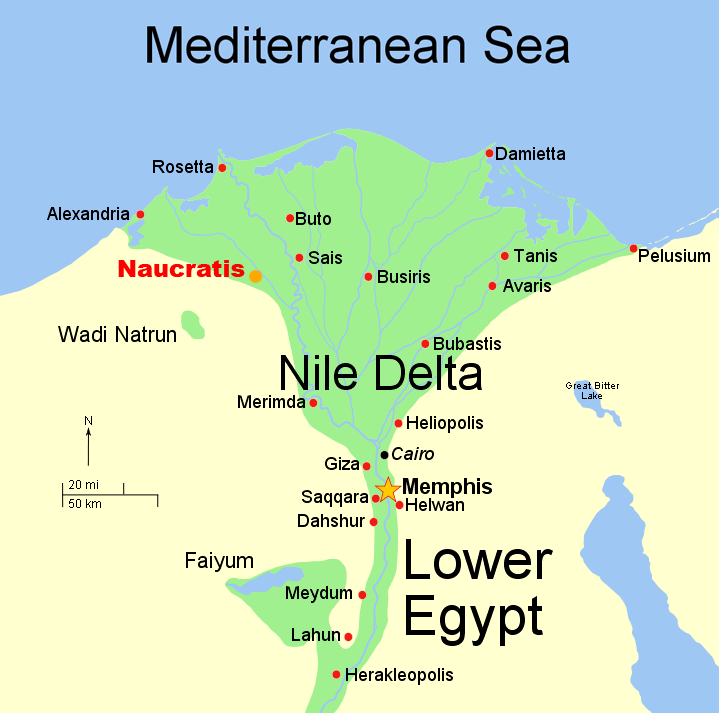

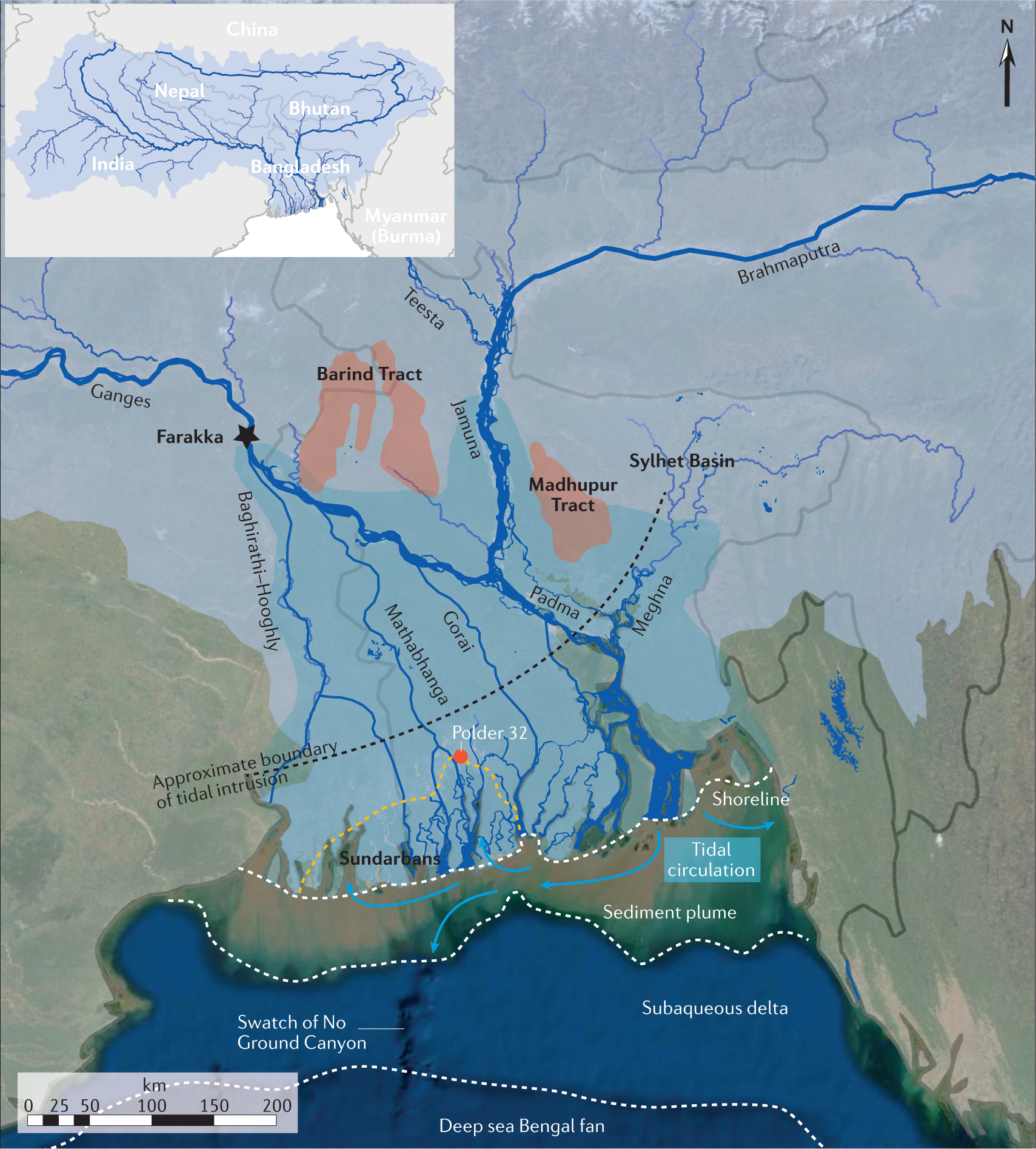
Nile Delta | Ganges-Brahmaputra Delta
Bird's Foot Delta
- Named for its long, finger-like projections formed by distributaries (smaller river channels that branch off the main river channel) extending out into the body of water.
- This type of delta has less wave action influencing its formation.
- Example
- Mississippi River Delta in the United States.
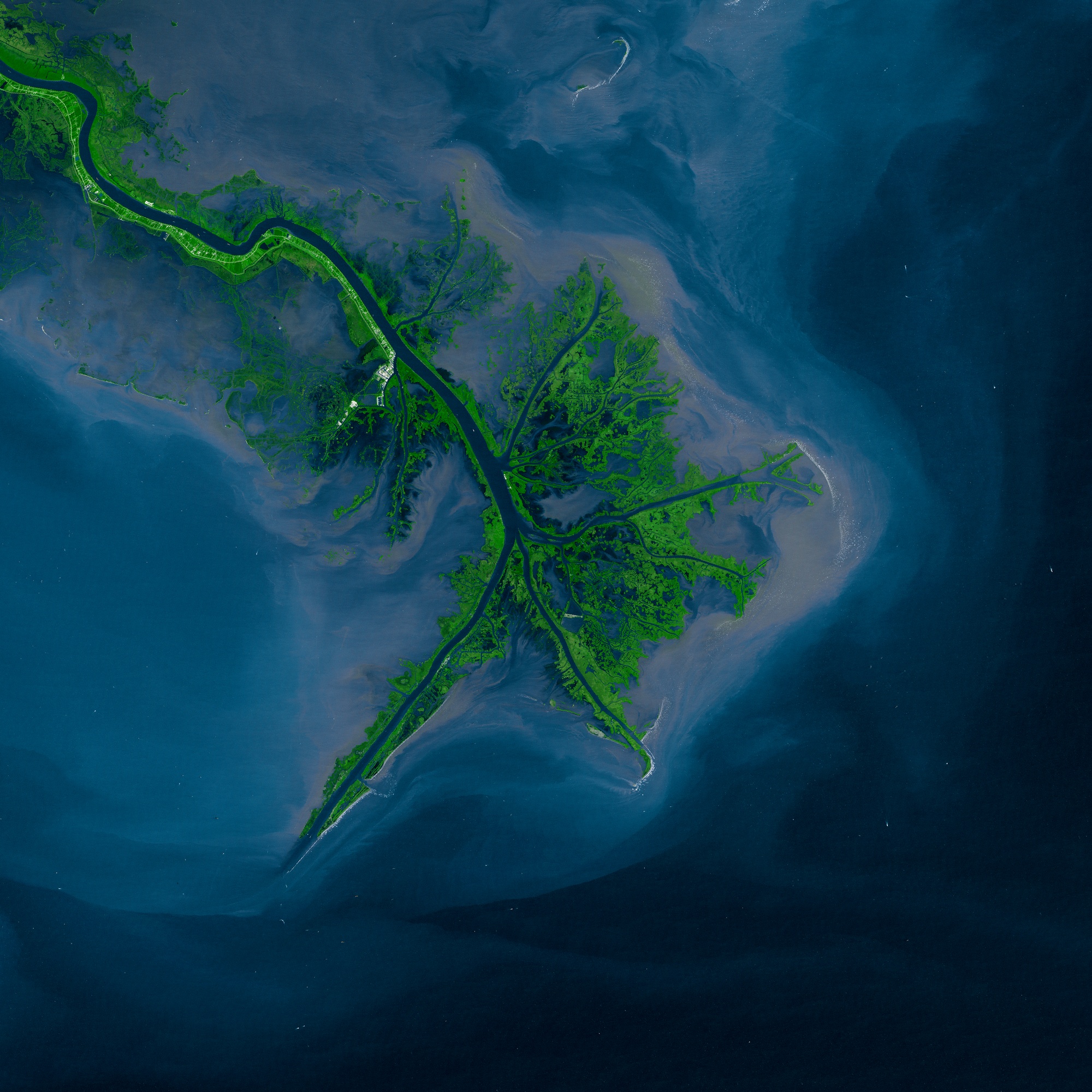
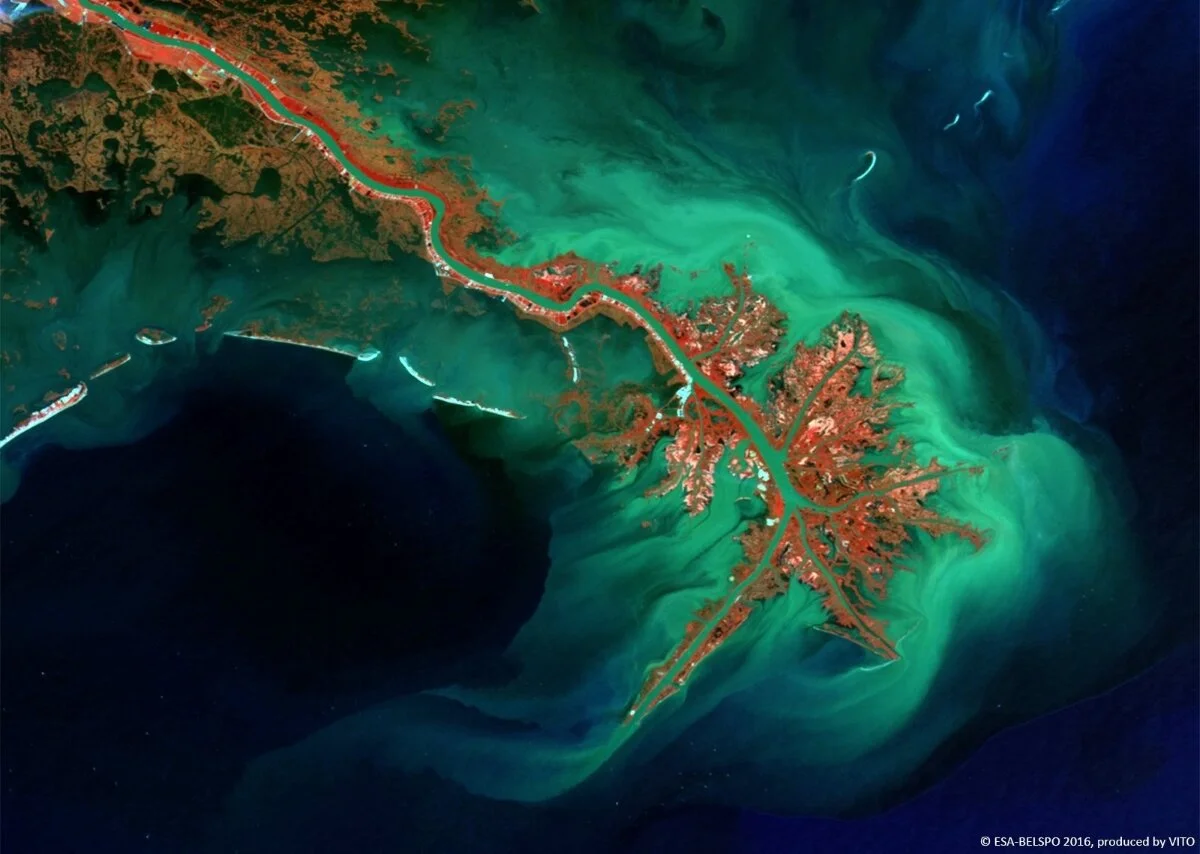
Mississippi River Delta
Cuspate Delta
- Formed by waves pushing sediment back along the sides of the delta, creating a pointed, tooth-like shape.
- Examples
- Tiber Delta in Italy.
- Ebro Delta in Spain.

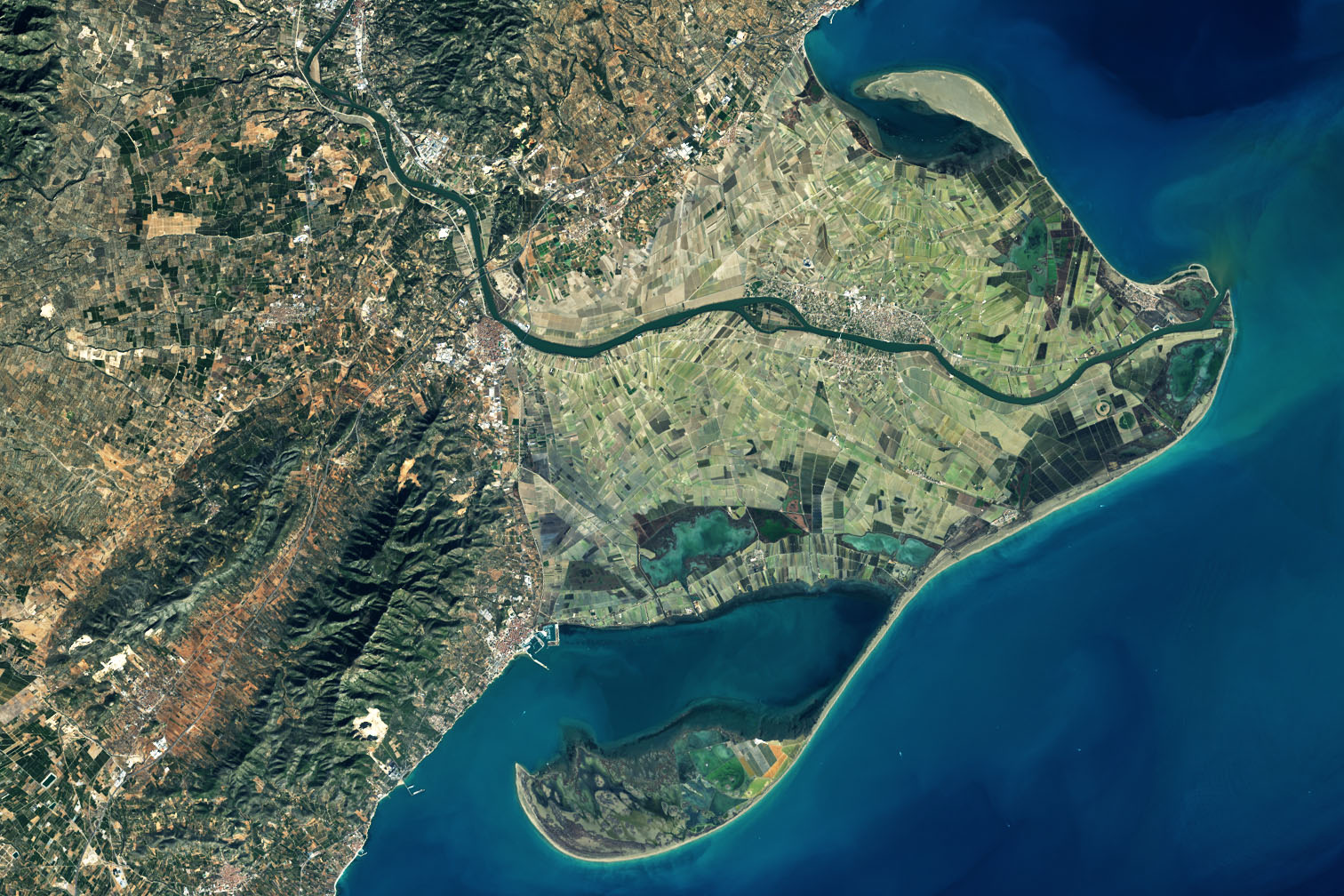
Tiber Delta, Italy | Ebro Delta, Spain
Estuarine Delta
- Forms within the estuary of a river, where freshwater mixes with saltwater.
- Example
- Seine River Delta in France.
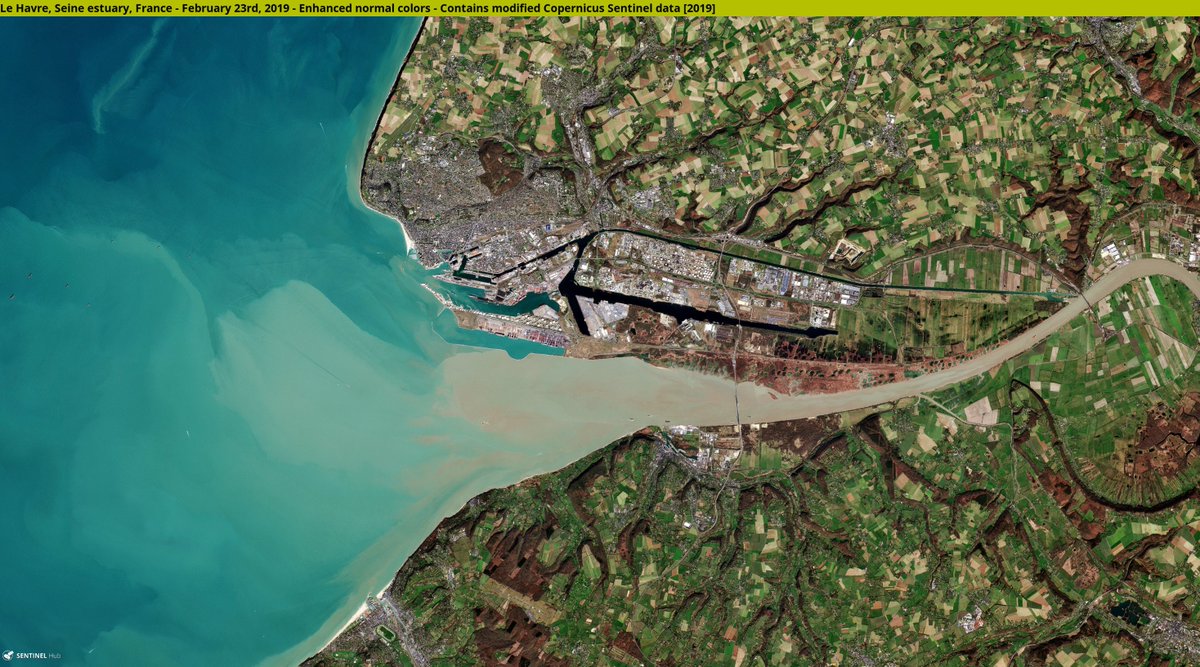

Tide-Dominated Deltas:
- Shaped largely by strong tidal movements, which redistribute the sediments over a larger area and can create multiple channels and islands.
- Examples
- Sundarbans Delta, which is part of the Ganges-Brahmaputra Delta.
- Yangtze Delta, hina.


Features of Deltas
Deltas typically have the following features:
- Distributaries: As rivers enter the delta, the decreased velocity causes the river to branch out into numerous smaller channels known as distributaries.
- Alluvial Plains: Deltas generally have large areas of flat, fertile land made up of the sediment deposited by the distributaries.
- Natural Levees: Elevated banks formed along the sides of river channels in a delta due to the deposition of sediments during flood events.
- Backswamps: Areas between natural levees that may fill with water and sediments during flooding.
- Mudflats and Salt Marshes: Low-lying areas that may be periodically covered by water; they often support diverse ecosystems and are crucial for birdlife and marine species.
Read more - Why is Okavango Delta, a UNESCO Heritage site, facing 'severe drought'?
Why are Deltas Important?
Biodiversity
- Deltas provide diverse habitats that are vital for many species, serving as crucial breeding grounds for fish and birds.
- Their complex ecosystems support a high density of life forms, contributing significantly to global biodiversity.
Agriculture
- The sediment-laden waters of deltas deposit nutrient-rich soil that is highly fertile.
- This makes deltas some of the most productive agricultural regions in the world, capable of supporting intensive farming and contributing to food security.
Economic Activities
- Deltas often host large populations due to their fertile lands and access to water resources.
- They are centers for fishing, rice farming, tourism and commerce, making them economically vital regions that contribute significantly to the local and national economies.
Ecological Services
- Deltas play critical roles in nutrient recycling, water purification, and flood management.
- Their wetlands act as natural buffers, carbon sequestration capabilities, absorbing pollutants and mitigating floods, thereby protecting inland areas from water-related disasters.
Threats to Deltas

Dam Construction
- River Management Impact: The extensive use of dams for river management controls river flow, increasing land available for development and managing water access for agriculture and industry.
- Sediment Flow Reduction: Dams significantly reduce the sediment load that rivers carry to deltas, which is essential for land growth and ecological balance.
- For example, the Nile Delta is experiencing shrinkage due to sediment deprivation caused by the Aswan Dam and other river management practices.
Seawater Intrusion
- Transformation of Water Resources: In the Krishna Delta, seawater intrusion is converting fresh groundwater into brackish/saline water, affecting potable and irrigation water availability.
- Increased Risk with New Constructions: Ongoing constructions of dams on the Krishna and Godavari rivers, coupled with heightened groundwater and hydrocarbon extraction, are exacerbating the risk, threatening both the delta's ecosystem and the millions residing there.
Climate Change
- Increased Extreme Weather Events: Climate change is leading to more frequent and severe weather events such as cyclones and floods, particularly impacting Asian deltas like the Irrawaddy and Ganges-Brahmaputra-Meghna, as well as the Mississippi River Delta.
- Hydrological Impacts: Higher peak flows and lower low flows are observed in the Rhine-Meuse and Danube Deltas due to climate change, along with increasing average and extreme temperatures, affecting the deltas' hydrology and increasing their vulnerability.
Pollution
- Eutrophication: Nutrient runoff from inadequately treated urban sewage and agricultural lands causes eutrophication, depletes water oxygen levels, harming aquatic life and reducing water quality.
- Hypoxic Zones: High nutrient loads lead to the formation of hypoxic zones (areas with very low oxygen), severely affecting marine life.
- An example is the growing hypoxic zone in the Gulf of Mexico, adjacent to major river deltas.
Invasive Species
- The introduction of non-native species can disrupt the ecological balance of delta regions, outcompeting local flora and fauna and leading to a decline in native biodiversity.
Subsidence
- Intensive groundwater and oil extraction in delta areas can lead to subsidence, where the land physically sinks, increasing the risk of flooding and exacerbating the effects of sea-level rise.

Conservation of Deltas
Integrated Management
- Purpose: This strategy aims to harmonize river basin and coastal zone management to sustain land and water use efficiently.
- Example: The Ganges-Brahmaputra-Meghana Delta in India utilizes integrated water resources management to balance the ecological, agricultural, and industrial demands on the delta, ensuring that water usage supports all sectors without depleting natural resources.
Restoration Projects
- Purpose: Restoring and maintaining wetlands, mangroves, and other natural barriers is crucial for protecting deltas from environmental hazards such as sea-level rise and severe weather events.
- Examples:
- India: In the Sundarbans Delta, mangrove restoration projects are prominent, helping to mitigate the impacts of cyclones and buffer against rising sea levels, protecting both the rich biodiversity and the local communities.
- USA: The Mississippi Delta has seen the implementation of large-scale wetland restoration and the construction of levee systems that are designed to work with natural processes, aiming to restore the delta's ability to handle floodwaters and support its ecosystem.
Sustainable Practices
- Purpose: Encouraging sustainable agricultural and industrial practices helps minimize the negative impact on delta environments.
- Example: Practices such as the controlled use of fertilizers and the adoption of cleaner production methods are promoted to reduce runoff and pollution that could lead to the degradation of delta ecosystems.
Policy and Regulation
- Purpose: Developing and enforcing policies that protect delta environments are vital for the long-term sustainability of these regions.
- Examples:
- Global: The Rhine Delta in Europe benefits from international cooperation and policies that involve multiple countries working together on water management, flood defenses, and habitat restoration, showing how cross-border collaboration can effectively manage and conserve delta regions.
- India: Regulatory measures have been implemented to control sand mining and reduce pollution in delta areas, particularly in the heavily impacted deltas like the Krishna and Godavari.
Deltas are dynamic and complex environments that require comprehensive and integrated management approaches to balance human use and ecological integrity. Effective conservation strategies are crucial to ensure that deltas continue to provide their valuable services well into the future.
